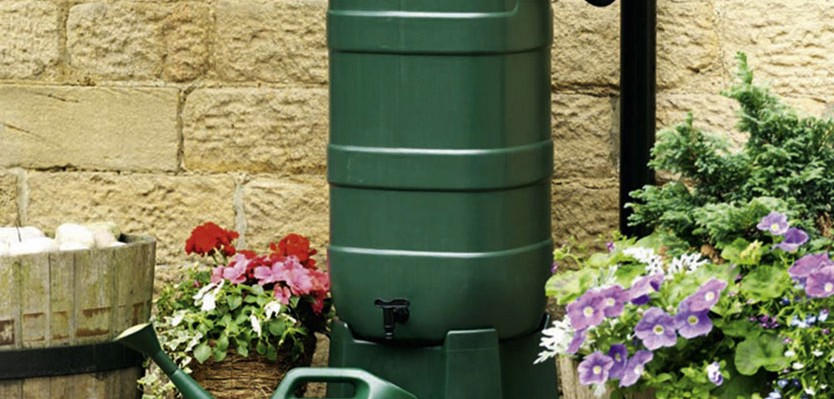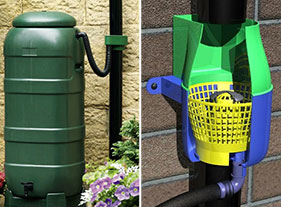
Rainwater harvesting is the process of collecting and storing rainwater. Garden water butts are a popular and inexpensive method of rainwater harvesting. Learn how to save water in the garden and reduce your utility bill with a water butt.
How to Save Water
After your water butt has collected water, you can use the water by opening a tap and filling a container or by attaching a hose. You can now water your plants, irrigate your lawn, fill up your pond, wash your windows or wash your car whilst conserving water!
Your independent water supply can be especially useful during hosepipe bans or regional water restrictions. Even during a drought you have a backup water source with rainwater harvesting.

How to Install
Your water butt needs to be placed alongside the downpipe of your roof gutter. An attachment is fitted to your downpipe to divert rainwater into your water butt; this attachment is called a downpipe diverter or rainwater diverter. Many diverters contain a filter so leaves and debris in your downpipe do not contaminate the harvested water.
This image shows a water butt attached to a downpipe and a close up of a downpipe diverter.
Types of Water Butts

 Water butts are typically made of plastic as this provides a light and water tight container. Some old fashioned water butts are made of wood. A large selection of shapes, colours and capacities are available. The most common water butts are a plastic cylinder of 120 litres capacity in green or black with a tap at the base.
Water butts are typically made of plastic as this provides a light and water tight container. Some old fashioned water butts are made of wood. A large selection of shapes, colours and capacities are available. The most common water butts are a plastic cylinder of 120 litres capacity in green or black with a tap at the base.
Decorative water butts are also available in various designs imitating wooden barrels, classic roman columns and antique pot vases. Some water butts are even designed to be used as a garden chair!
Large capacity water butts can hold up to 300 litres. Anything larger than this is referred to as a water tank but the concept is the same whereby rainwater is diverted into the container.
Helping the Environment
In addition to water conservation, widespread rainwater harvesting through your local community can improve the environment. Your regional water plant can reduce water pumping and water treatment which in turn saves energy and resources.
Rainwater harvesting will only have a significant impact if more households get involved. Tell your neighbours how they can save water and help the environment with water butts.



